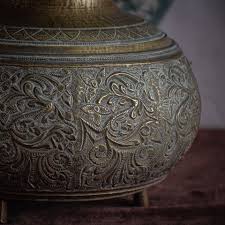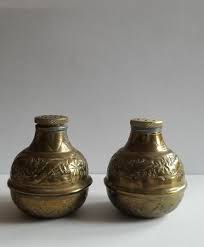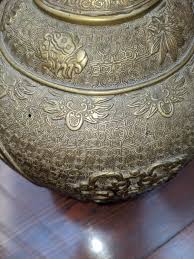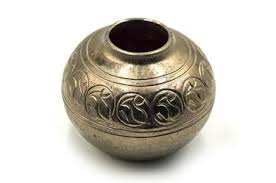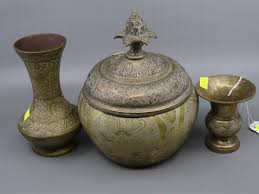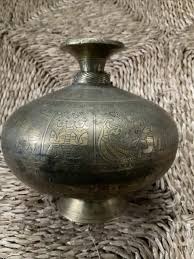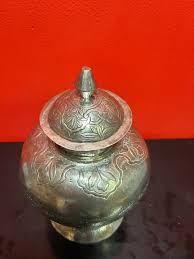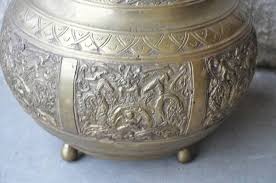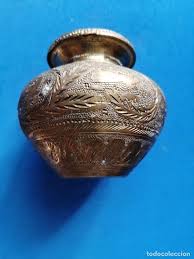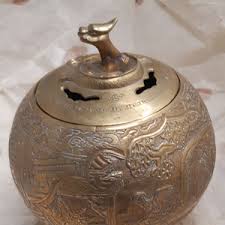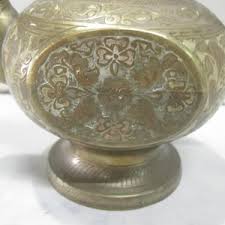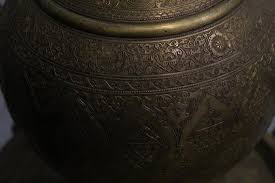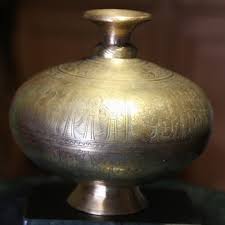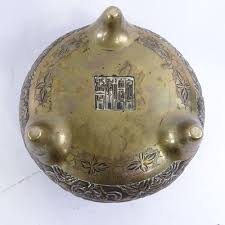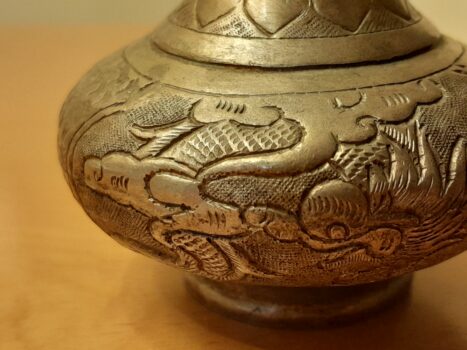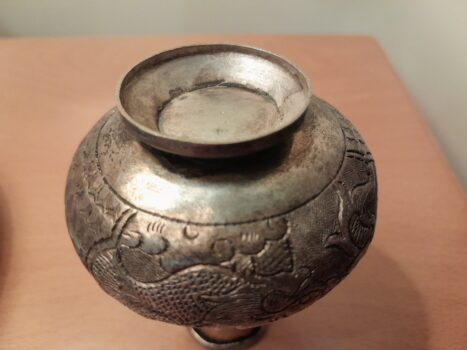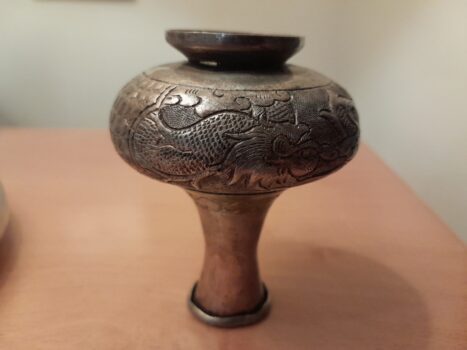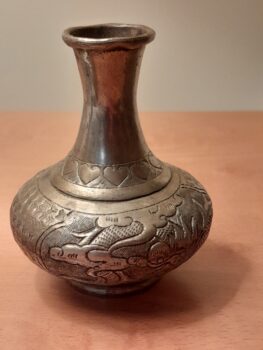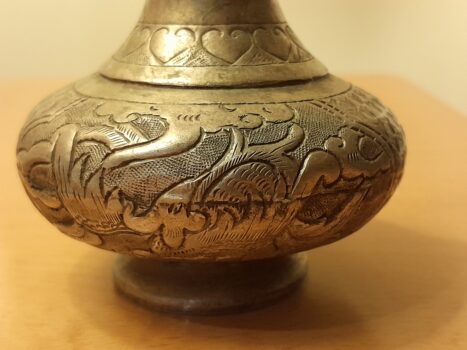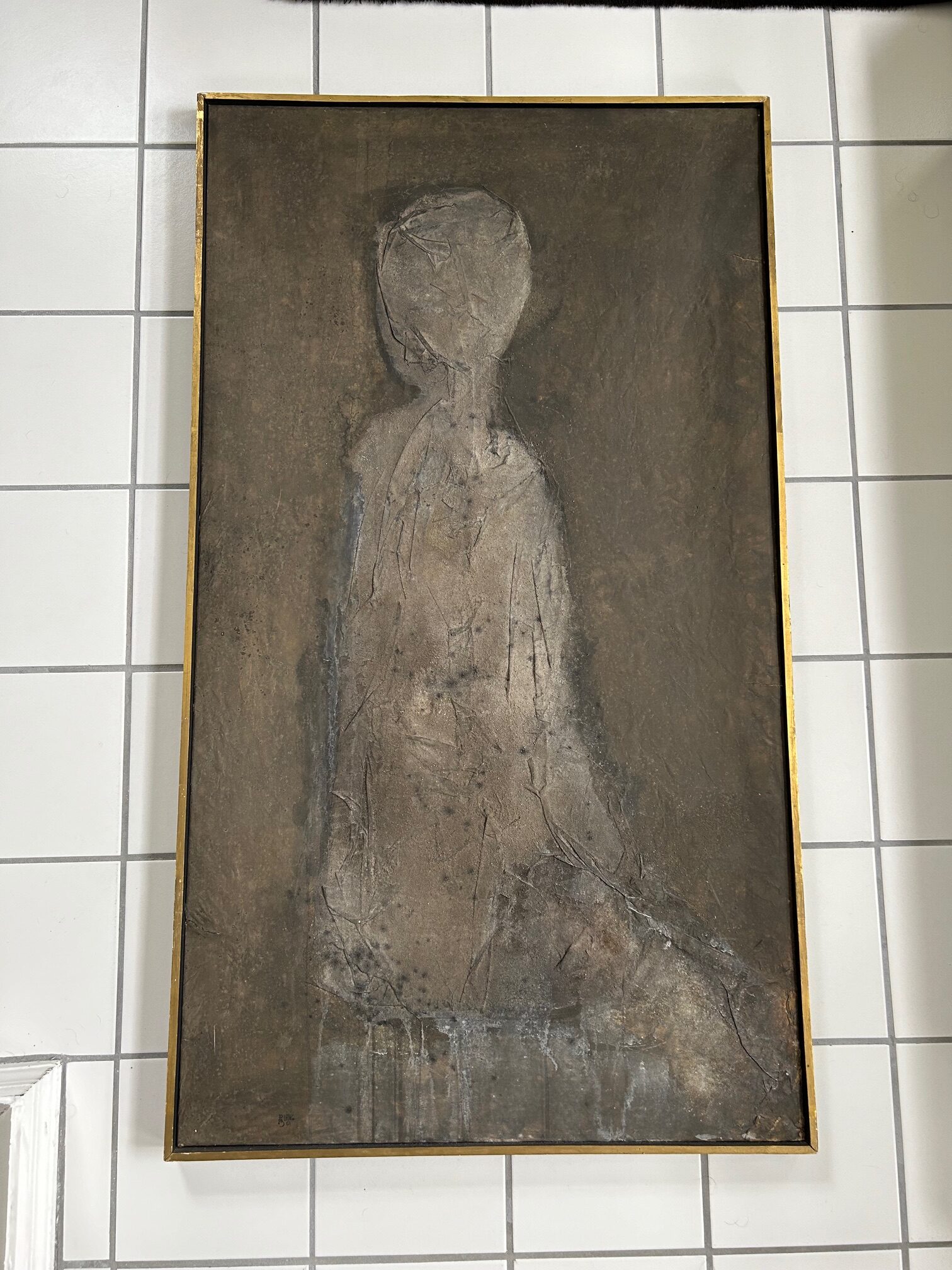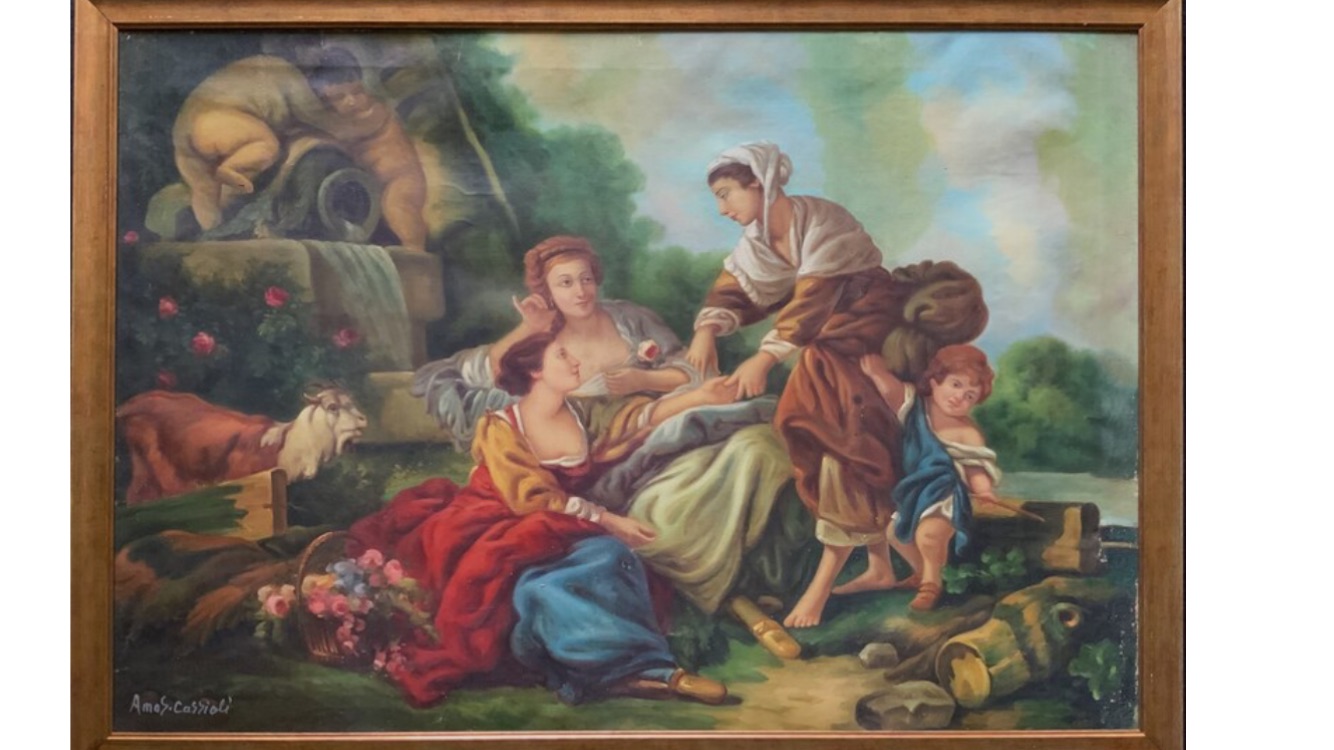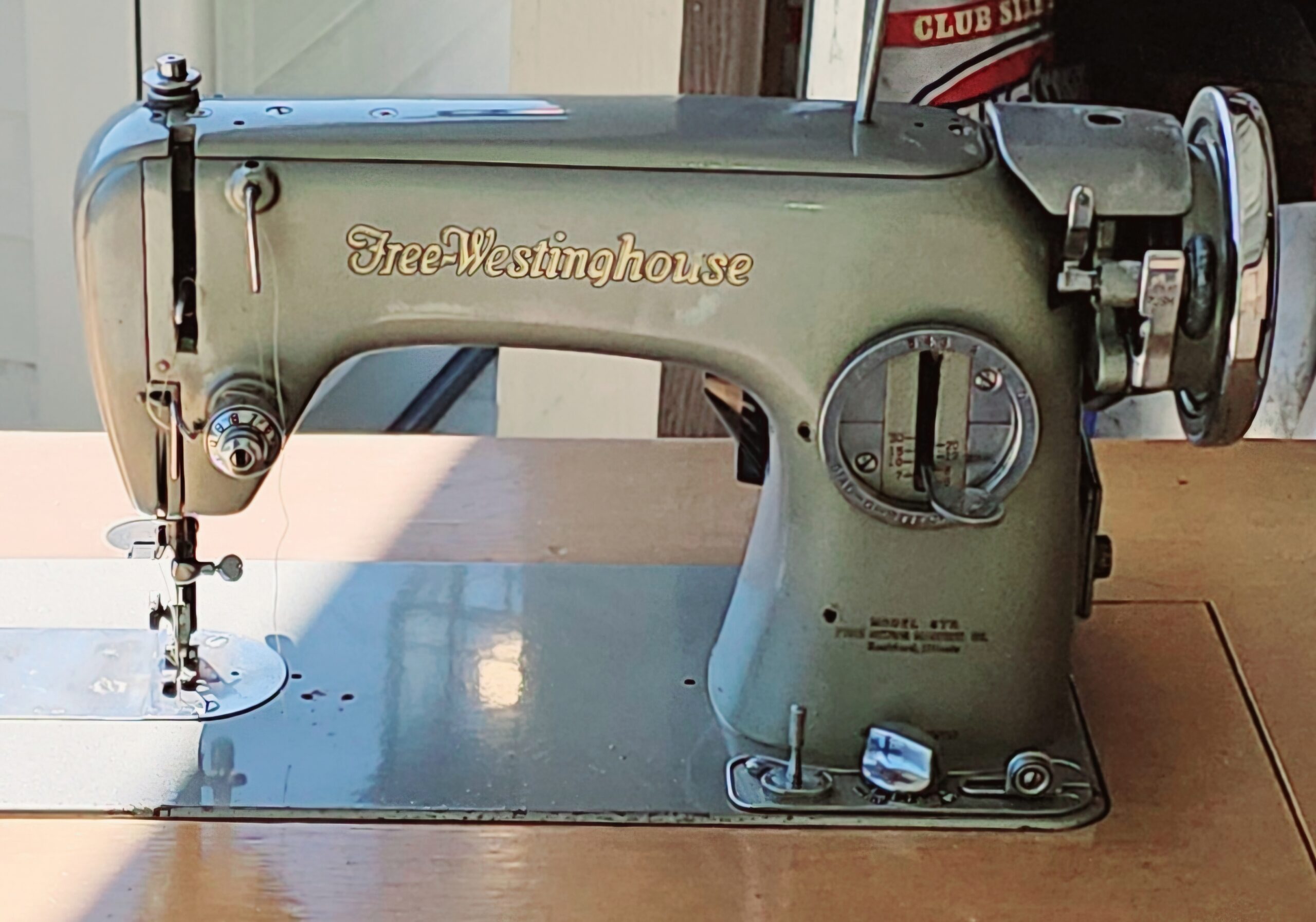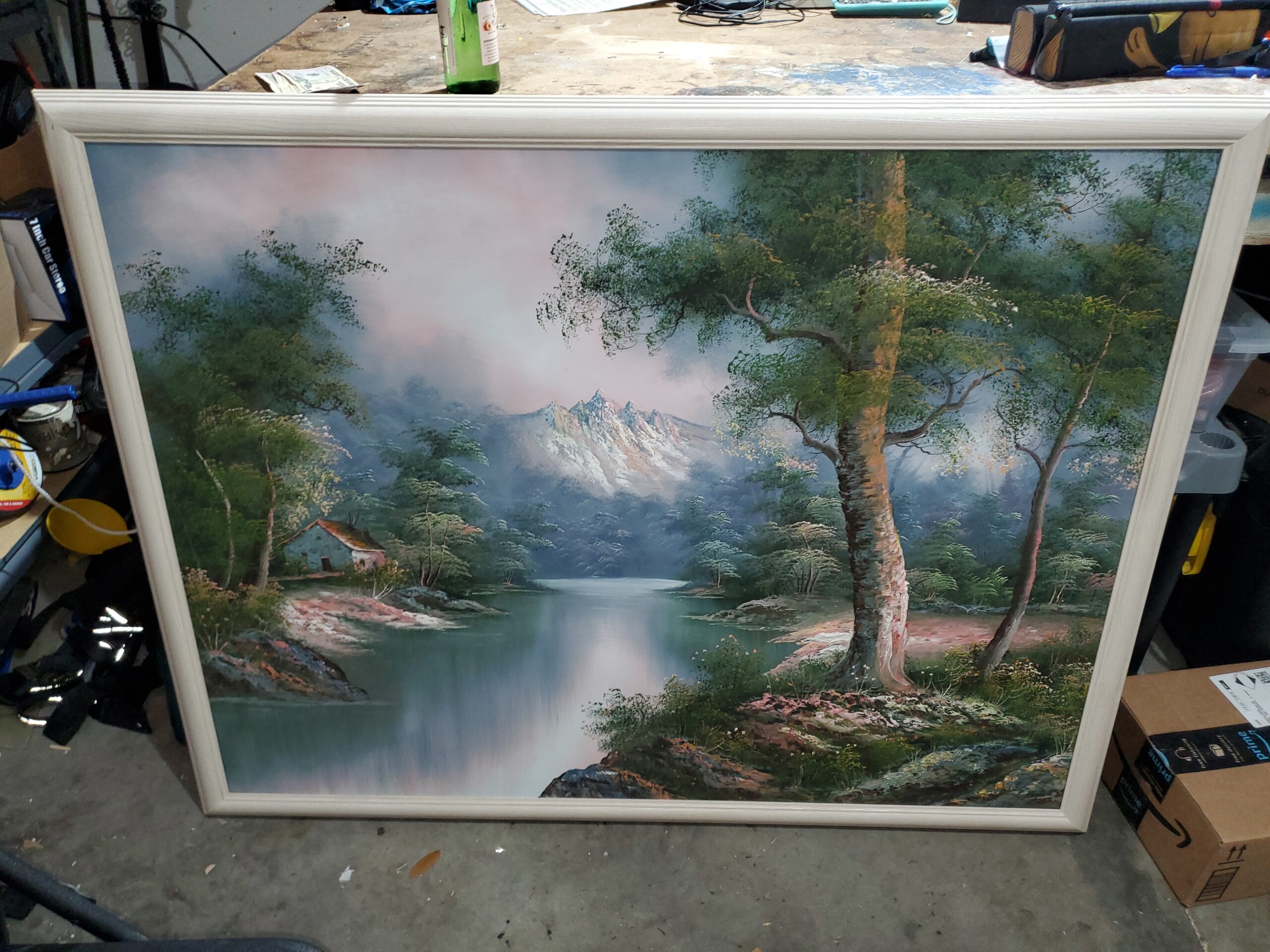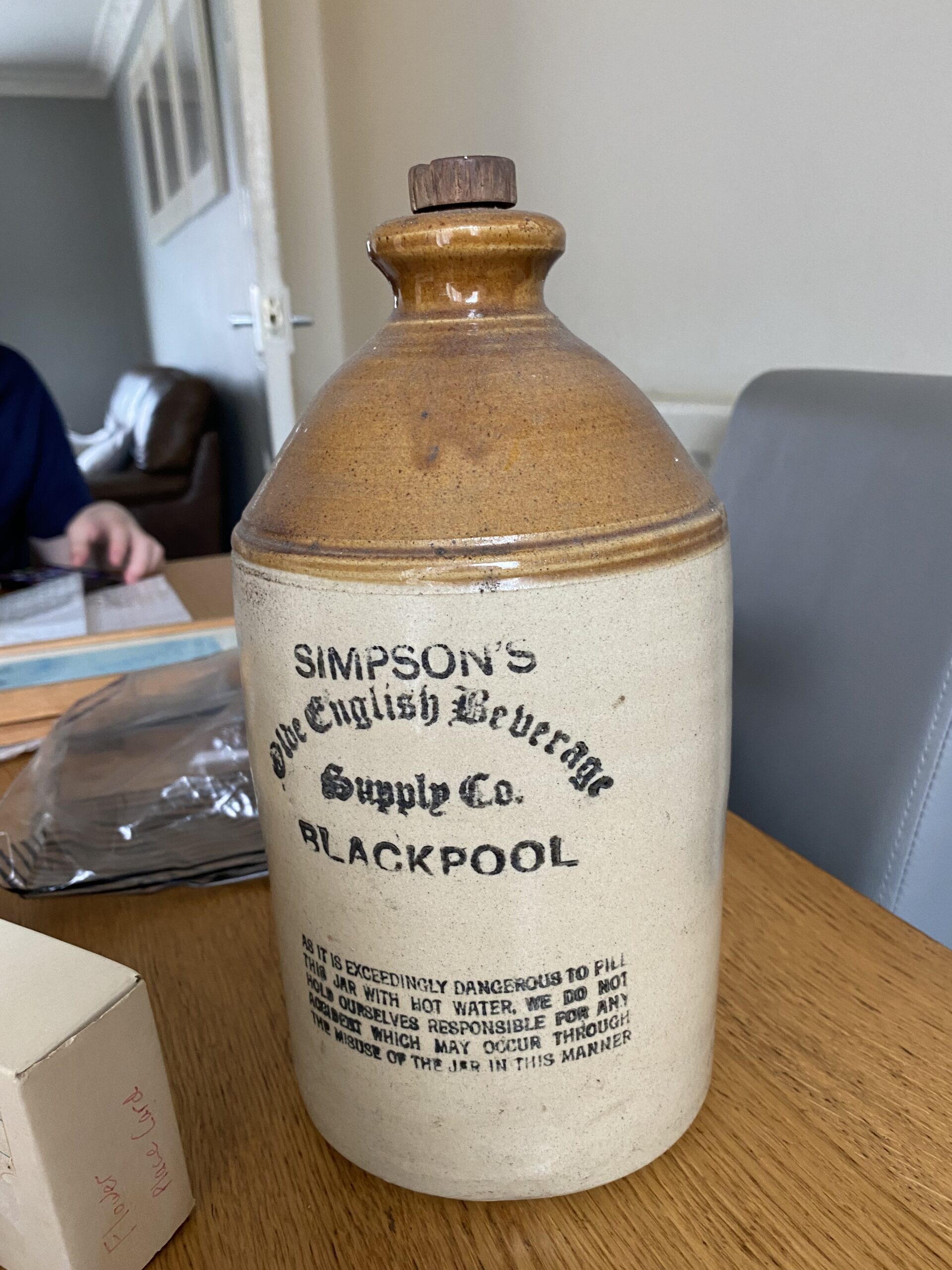An antique metal vase (brass) with black patina (no copper) that suggests circa early 20thC. It features intricate engravings, possibly of an Asian-style dragon among clouds, which could indicate an origin in Chinese or similar East Asian cultures. The neck is slender, expanding to a bulbous body, typical of certain historical styles. It is a hand engraved vase with hand-joint pieces. Unmarked, origin South China.
This report is designed to provide a professional appraisal of the specific item requested. It contains a detailed description and evaluation of the item, as well as information about the valuation method used. The value given in this appraisal report is applicable only to the item in question and should not be interpreted as a general valuation for any similar items. Values for similar items can vary significantly, ranging from one hundred to one hundred thousand US dollars, depending on subtle details.
This report is intended to give the owner an appraisal of their item’s value, whether it is furniture, china, glassware, or any other type of antique or collectible item. The information provided will help the owner to understand their piece and its value. Furthermore, it provides an appraisal value in US dollars, as well as advice on how to proceed if the owner wishes to sell the item. It should be noted that this report is not intended to encourage the owner to sell their antique item; instead, it seeks to provide information on its value so that the owner can make an informed decision.
Description, identification, provenance reconstruction, age estimation, style and similar items used for comparison.
Identification
As a professional antique appraiser, the process of identifying an antique item like the described brass vase from a photograph requires a meticulous analysis combining connoisseurship with a knowledge of art history and manufacturing techniques. Initially, the appraiser would closely examine the image for stylistic details, assessing the form and proportions of the vase, such as the slender neck and bulbous body, which may align with specific historical design periods or regional styles. The absence of a visible copper presence suggests a higher likelihood of it being brass rather than bronze, which often features a copper alloy. The intricate engravings of a dragon amidst clouds point towards an East Asian aesthetic, quite likely Chinese, as dragons are a common motif in Chinese art symbolizing power and good fortune. The depiction of the dragon and the style of the clouds can provide clues to the specific era, as different dynasties had distinct artistic expressions. The quality of the craftsmanship, visible in the hand-engravings and how the pieces are joined, would be scrutinized for signs of age, wear, and the type of tools that would have been used at the beginning of the 20th century. The black patina could be a result of aged brass or an applied finish, which would be consistent with preservation techniques of the era. An appraiser would also consider the provenance of the item and any available historical context, which can be quite challenging with unmarked pieces. However, regional characteristics from South China, such as local styles, materials, and construction methods, could narrow the provenance. Research into similar items cataloged in public and private collections, auction results, and academic publications could aid in comparison and validation. In assessing authenticity, the appraiser must rule out any possibility of the item being a reproduction or later work mimicking early 20th-century styles. This is done by examining signs of wear and aging that cannot be easily fabricated or indicative markings of modern production methods. Additionally, the context in which the photograph is provided and who is offering the piece could offer further insights into its history and thus support its authentication. With the sum of these factors and methodologies, the appraiser can construct an educated hypothesis about the vase’s origin, date, and possibly its value.
Provenance
As an experienced professional antique appraiser, the provenance of an antique item is traced through a careful and systematic evaluation of various attributes the piece presents. For the subject matter – an antique brass vase with black patina and intricate engravings – a multifaceted approach would be taken to determine its history and origins. The first factor to consider is the design and craftsmanship of the vase. The style of the dragon motif and the quality of the engraving on the vase can reveal significant information about its origin. Dragons have long been an emblem in Chinese culture and artistry, symbolizing power, strength, and good luck. If the dragon in the engraving resembles those found in traditional Chinese artwork, especially from the early 20th Century, it strengthens the assertion of the vase's South Chinese origin. The cloud motif is also commonly seen in Asian art, further suggesting an East Asian provenance. Expertise in historical styles is crucial. The vase's shape, with its slender neck and bulbous body, may relate to specific dynasties or artistic movements within Chinese or broader East Asian history. By comparing these features with documented examples from historical art and antiques archives, I can narrow down the timeframe and geographical region even further. Another significant consideration is the metalwork technique, particularly the fact that this piece is hand-engraved and hand-joined. Knowing how metalwork was crafted in various regions during the early 20th century can provide clues to the method of production and link it to localized artisan practices. The absence of marks often indicates either a piece was created for local use where markings were unnecessary or it predates the period when hallmarks and maker's marks became standardized. In such cases, other forms of documentation, if available, become valuable for the vase's authentication. This can include historical sale records, previous ownership documentation, photographs, or records from where the item was acquired. Finally, examining the black patina, which is not consistent with the natural patination process of brass, suggests that the vase may have been treated or possibly given a finish to achieve an aesthetic effect. This could correlate with certain historical or cultural practices in metalwork finishing, attributing to the vase's authenticity and potentially providing a more accurate insight into its age. In conclusion, through evaluating its artistry, material composition, stylistic elements, craftsmanship techniques, and any supplementary documentation, the provenance of the antique brass vase can be established, providing valuable insight into its past and potential value. Each factor would be meticulously cross-referenced with available historical data, art historical context, and known regional practices to form a cohesive narrative on the vase's origin, history, and ownership.
Age
In appraising the age of the specific antique brass vase in question, I would deploy a multi-faceted approach, examining the craftsmanship, aesthetic elements, and other contextual clues. Construction techniques such as hand engraving and the joining of pieces without machine aid point towards a pre-industrial manufacturing process. The absence of machine marks or uniformity in the engravings indicates a probable creation before the widespread use of mass-production methods in the 20th century. The choice of material, brass, with a black patina devoid of copper highlights, suggests a deliberate ageing process or natural tarnishing over many years. Often, the composition of metals and the type of patina can reveal insights into the era of production based on known historical practices. The intricate design featuring an Asian-style dragon amidst clouds is emblematic of East Asian, likely Chinese, cultural motifs. I would compare the iconography to known periods of Chinese decorative art to align the design elements with a specific era, likely corresponding to times of flourishing artistic expression in metalwork. Further, the vase’s silhouette, marked by a slender neck and bulbous body, aligns with certain historical styles that flourished in particular eras. These stylistic features may be cross-referenced with documented shapes in historical catalogs or existing museum collections to pinpoint a more precise date range. The lack of markings can be both typical for items made in rural areas or those crafted for local use as opposed to export where markings were more common for identification and valuation. The reported origin of South China can aid in this determination, as certain periods and regions had distinctive styles and methods of production. Given these factors, I would posit that the vase likely originates from the late Qing Dynasty to the early Republic of China period, which aligns with the early 20th century. To enhance the accuracy of my appraisal, I would consult academic references on Asian antiques, contact specialists in the field for verification, and use forensic techniques such as spectrometry to analyze the metal composition, which can offer additional clues to the object's timeline.
Style
This antique brass vase, with its elegant black patina and absence of copper, is a fine representation of early 20th Century metal artisanship possibly originating from South China. Its slender neck, gracefully expanding to a bulbous body, mirrors traditional forms that have been prevalent in Chinese vases for centuries, embodying an aesthetic continuity that speaks to its cultural heritage. The engraved design featuring a dragon amidst clouds is emblematic of Chinese iconography, where the dragon often symbolizes power, strength, and good luck. The depiction of clouds in Chinese art traditionally conveys the celestial realm or auspiciousness, creating a harmonious composition that is rich in cultural symbolism. The engraving technique employed on this vase suggests a high level of craftsmanship. Hand-engraved designs, such as those found on this piece, require meticulous skill and patience, making each engraved piece distinct and, often, one-of-a-kind. The dragon's intricate details indicate a mastery of the metal-engraving art form, where every scale and swirl of the cloud might have been carefully incised by the artisan's hand. Moreover, the hand-joint pieces further point to the traditional metalworking methods used in its construction, relying on skilled labor rather than modern, machine-based processes. The unmarked nature of the vase is not uncommon for the period and region, as many artisans of the time may not have signed their works or marks could have worn away with time and use. However, this anonymity does not detract from its aesthetic and cultural value. Instead, it invites a deeper investigation into the localized styles and techniques that could provide insight into the specific workshop or community within South China that produced such a piece. Overall, the vase stands as a testament to the enduring legacy of Chinese metalworking and the rich artistic expressions of early 20th Century East Asian culture.
Similar Items Used for Comparison Purposes
Comparable sales information, including prices realized at recent auctions or private sales of similar items
In order to provide an up-to-date estimate of the fair market value for the item, I utilized the data collected, including auction prices, private sale prices, and other relevant market information. This is crucial as it can be used in various contexts such as insurance, estate planning, and art market analysis. It also offers a valuable insight into how the valuation of the item may have changed due to environmental or economic factors.
The auction prices and private sale prices were a significant factor in determining the current market value of the item, as they are based on actual transactions between buyers and sellers in the market. As such, they are a strong indicator of the expected value of the piece in the near future. By analyzing auction results and private sale prices from the last 6 months, I was able to accurately determine the current fair market value of the item.
This approach provides a comprehensive view of how the value has changed over time and gives insight into any potential areas of appreciation or depreciation in its price. Additionally, it allows me to adjust my valuation as new auction prices and private sale prices become available.
Conclusion
This antique brass vase, with its elegant black patina and absence of copper, is a fine representation of early 20th Century metal artisanship possibly originating from South China. Its slender neck, gracefully expanding to a bulbous body, mirrors traditional forms that have been prevalent in Chinese vases for centuries, embodying an aesthetic continuity that speaks to its cultural heritage. The engraved design featuring a dragon amidst clouds is emblematic of Chinese iconography, where the dragon often symbolizes power, strength, and good luck. The depiction of clouds in Chinese art traditionally conveys the celestial realm or auspiciousness, creating a harmonious composition that is rich in cultural symbolism. The engraving technique employed on this vase suggests a high level of craftsmanship. Hand-engraved designs, such as those found on this piece, require meticulous skill and patience, making each engraved piece distinct and, often, one-of-a-kind. The dragon's intricate details indicate a mastery of the metal-engraving art form, where every scale and swirl of the cloud might have been carefully incised by the artisan's hand. Moreover, the hand-joint pieces further point to the traditional metalworking methods used in its construction, relying on skilled labor rather than modern, machine-based processes. The unmarked nature of the vase is not uncommon for the period and region, as many artisans of the time may not have signed their works or marks could have worn away with time and use. However, this anonymity does not detract from its aesthetic and cultural value. Instead, it invites a deeper investigation into the localized styles and techniques that could provide insight into the specific workshop or community within South China that produced such a piece. Overall, the vase stands as a testament to the enduring legacy of Chinese metalworking and the rich artistic expressions of early 20th Century East Asian culture.
Appraisal Value ($)
$550
Appraisal Report made by:
Andrés Gómez
BSc, MSc, Expert Art Appraiser
10+ years of experience in online antique and collectible appraisals.
100k+ Customers Served.
Antique Store Owner.
You can check my portfolio of past appraisals here:
https://www.appraisily.com/andres-portofolio/
Signature:

We have Experts online now.
Pictures received.
Custom made Ad Copy Text
Step into the world of antique elegance and own a piece of history with this exquisite early 20th century brass vase, a testament to the unparalleled craftsmanship of South China's skilled artisans. Its alluring black patina whispers tales of a bygone era, creating a captivating contrast that accentuates the masterfully hand-engraved dragon, a mythical creature revered in Asian culture, coiling amid ethereal clouds. The dragon motif, a symbol of power and luck, is beautifully rendered in an intricate dance that imbues your space with an aura of ancient mystique. This unmarked treasure, absent of copper, is a pure expression of traditional artistry that seamlessly blends into the modern collector's aesthetic, ensuring that the legacy of its makers continues to be celebrated. Indulge in the visual symphony of this handcrafted brass vase, where the slim, elegant neck gracefully flares into a bulbous body, mirroring the historical vases that once adorned the palaces of nobility. The unique combination of the vase's silhouette with the etched artwork culminates in a piece that not only serves as a vessel but as a standalone work of art—a rarity in today's fast-paced world. This unassuming yet majestic vase possesses a silent pedigree, its unmarked base a humble nod to the anonymous artists whose hands shaped its destiny. As a convergence of rarity, beauty, and cultural heritage, this vase is not simply a decorative object, but a cherished heirloom waiting to become part of your legacy.
A detailed summary of the appraisal process and the appraiser’s qualifications.
Mark-to-market appraisal is a vital method for determining the current value of an item. This form of valuation requires an appraiser to consider various factors, such as market conditions, the condition and age of the item, and its rarity. By taking all these elements into account, a mark-to-market appraisal delivers an accurate assessment of an item’s current market value.
The item’s rarity, as determined by its availability and demand, is also considered in mark-to-market appraisal. Appraisers use this information to determine if the value of a piece is likely to increase or decrease over time. Additionally, they will inspect the condition of the item and note any signs of wear or damage that might affect its future resale value.
When performing mark-to-market appraisals, appraisers also consider market conditions by researching current market trends and comparable items that have recently sold. This information is used to provide an estimate of an item’s worth at that point in time. By considering all of these factors, mark-to-market appraisal is able to give a reliable indication of the current value of an item. This kind of valuation can also ensure fair prices are paid and received when buying or selling items.
In summary, mark-to-market appraisal is a crucial tool for determining the true value of an item, enabling buyers, sellers, and appraisers to make informed decisions regarding its worth. It takes into account multiple aspects to provide an accurate assessment of the current market value of an item. This information can be used to ensure that buyers and sellers are getting a fair price for the item, and that the appraiser’s valuation is up-to-date and reflective of current market conditions.
In the case of insurance replacement appraisals, mark-to-market appraisals can also be used to accurately estimate the cost of replacing a lost or damaged item. The current value, as determined by the appraisal, is then used to determine the amount that the insurance company will pay back to the policyholder. This way, policyholders can rest assured that they will receive an appropriate sum for any item that needs to be replaced due to accidental damage or theft. Additionally, this kind of valuation helps insurers ensure they are not being overcharged when items need to be replaced as part of a claim settlement.
The appraisal process is a thorough evaluation of the item or items in question. It involves researching and analyzing the information provided by the requester in order to provide an accurate estimate of its value. The appraiser takes into account factors such as condition, rarity, demand, and market prices. Photographs and detailed descriptions are especially important when providing an appraisal, since they help the appraiser identify any potential flaws or defects that could affect the item’s worth. By using all the resources that are available, an evaluation can be done quickly, efficiently, and with a high level of accuracy.
A statement of the appraiser’s liability and any potential conflicts of interest.
A qualified appraisal, also known as a formal written evaluation, is a professional assessment of the monetary value of an item by an individual who has specialized knowledge, expertise, and training in the field of appraisals. This person must meet certain educational and professional requirements, including experience in researching and evaluating items, as well as knowledge of the market and current market trends. The purpose of a qualified appraisal is to provide an objective and unbiased opinion of the value of an item for various purposes, including insurance claims, tax planning, estate planning, or to help determine a fair price for a sale or purchase.
We are committed to providing our clients with the most accurate and unbiased appraisal reports. To ensure impartiality, we adopt a flat rate, fixed fee structure for all appraisals, instead of a percentage-based fee. This eliminates any potential conflicts of interest between the appraiser and the final report value. Our appraisal reports are in compliance with the Appraisal Foundation’s USPAP (Uniform Standards of Professional Appraisal Practice) standards and guidelines, which are widely accepted as the ethical and performance standards for appraisers. This guarantees that our reports are of high quality and legally defensible.
